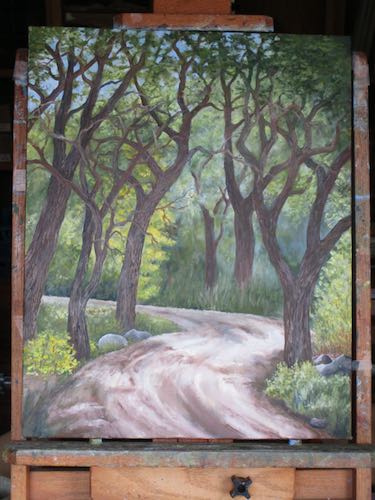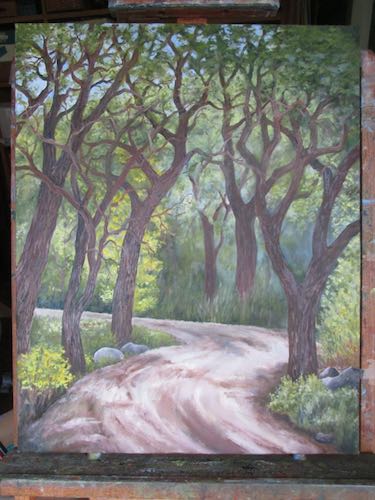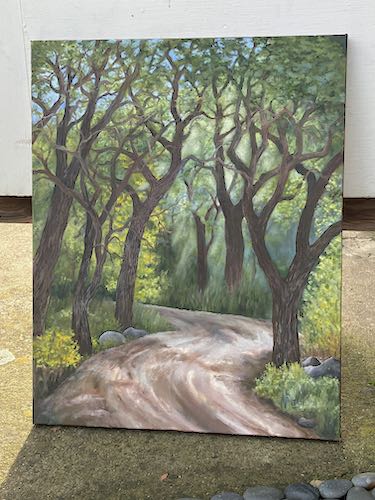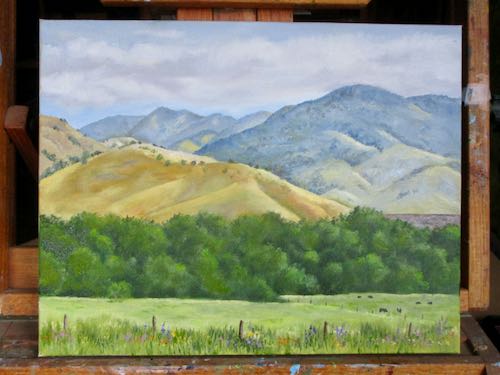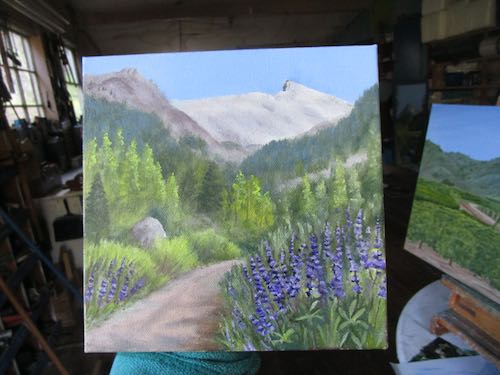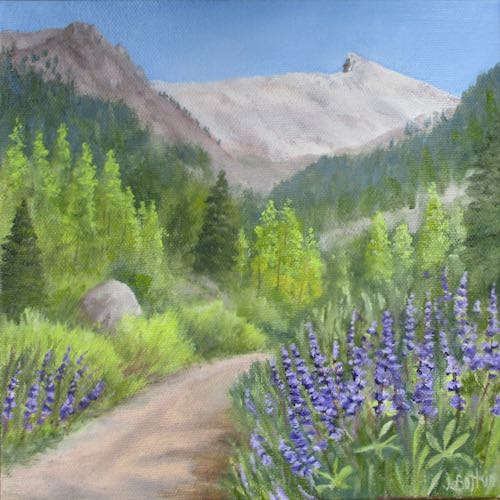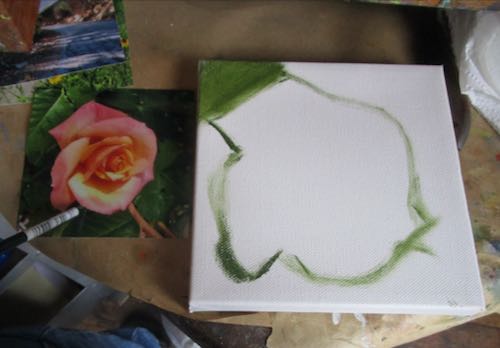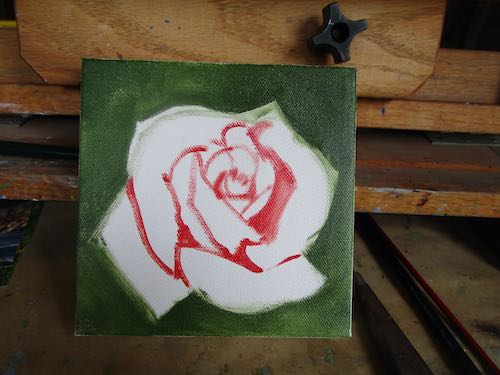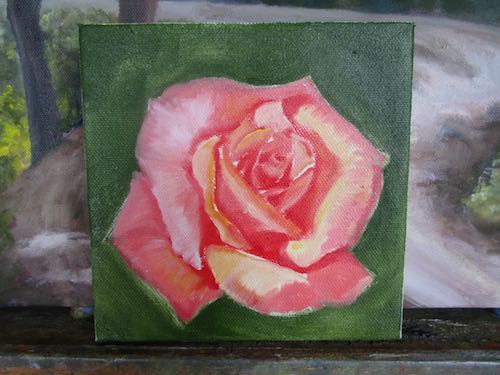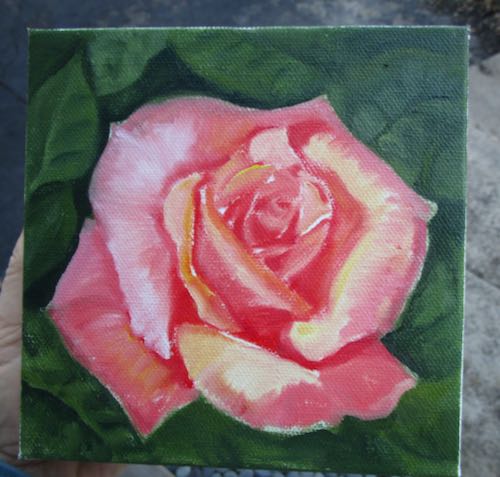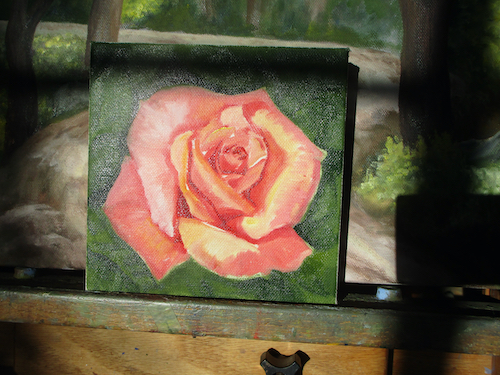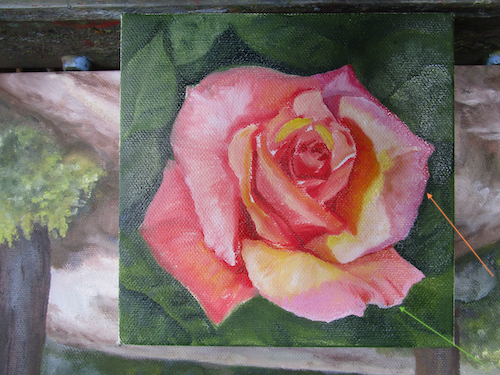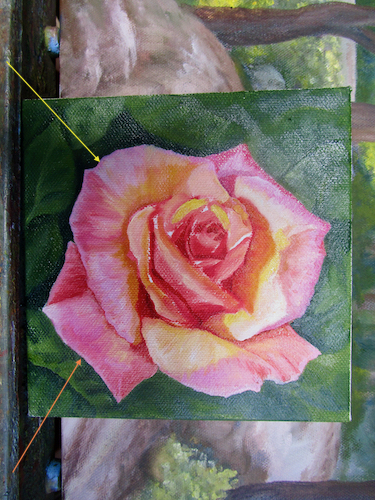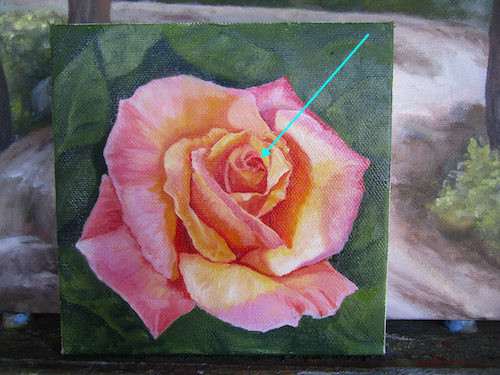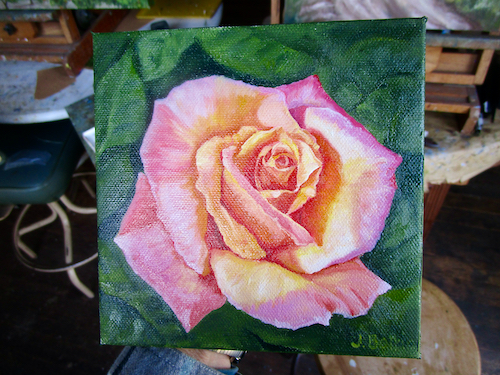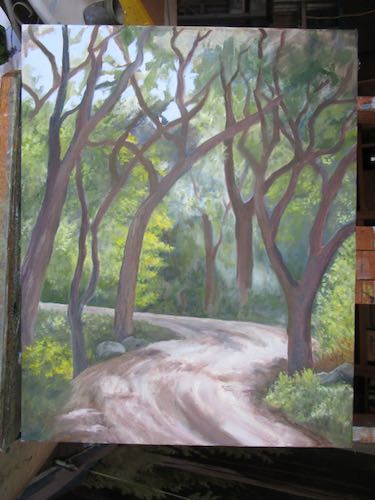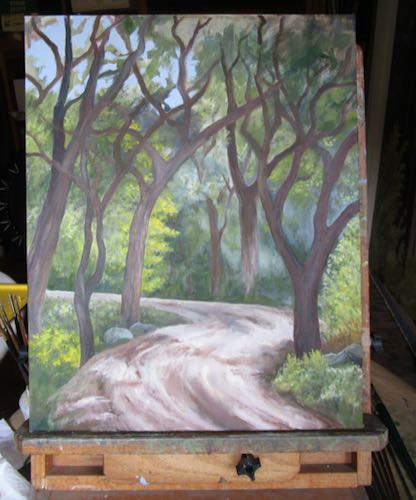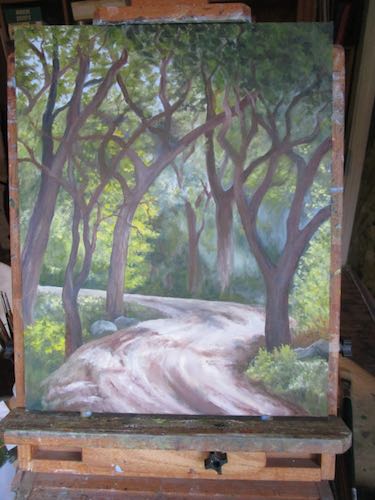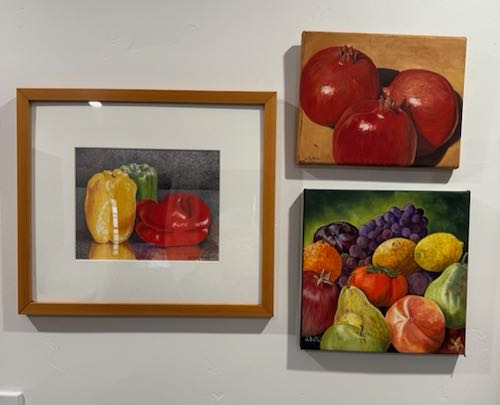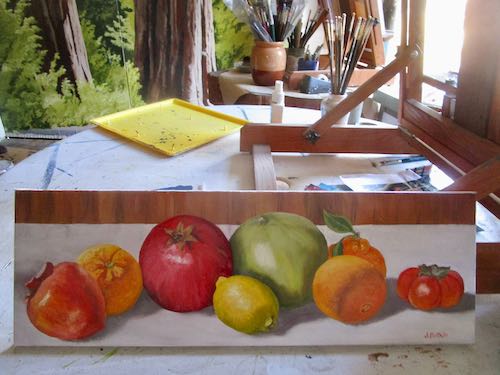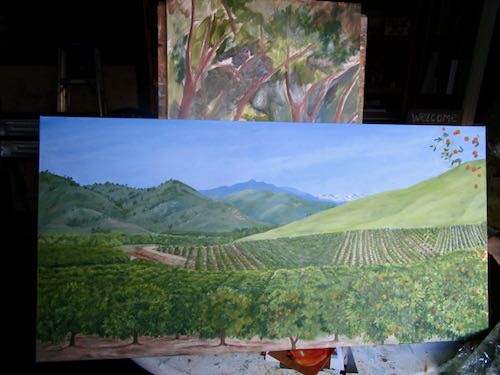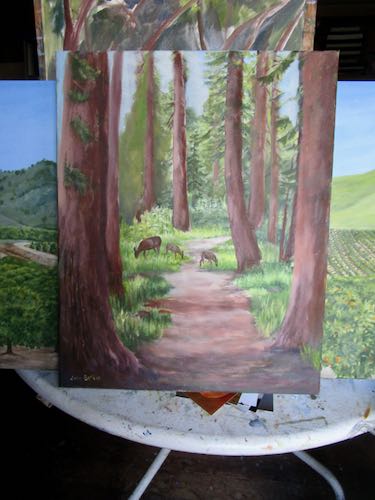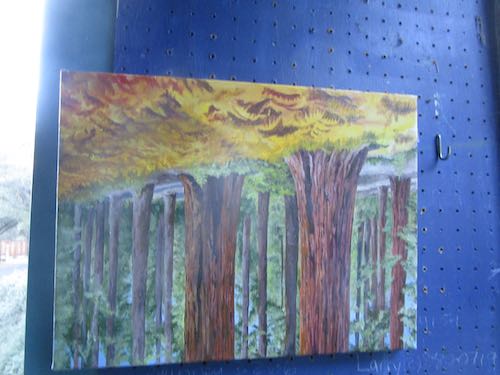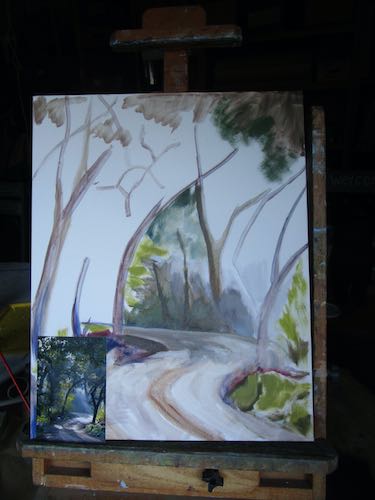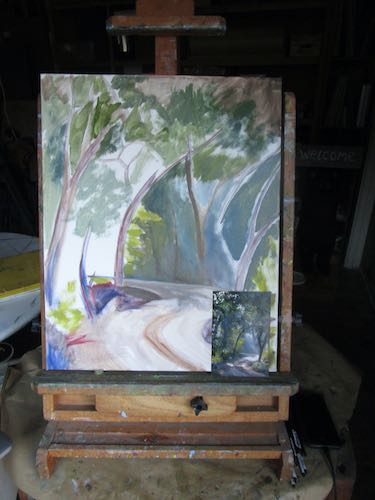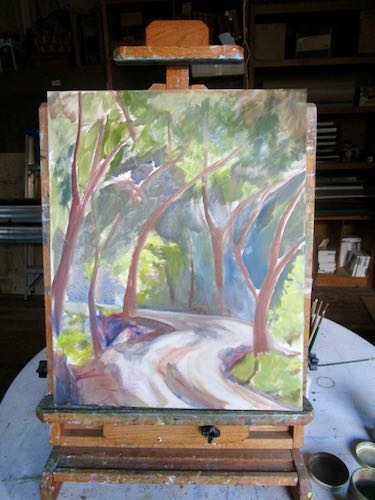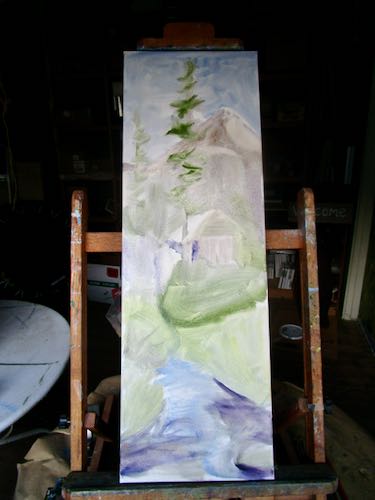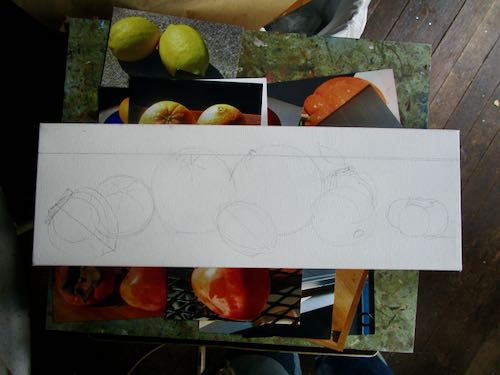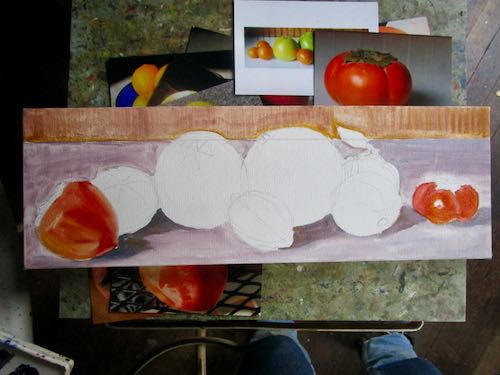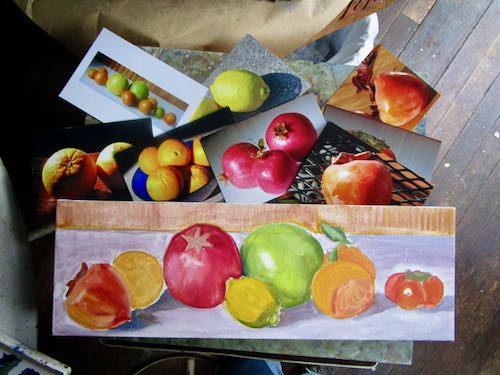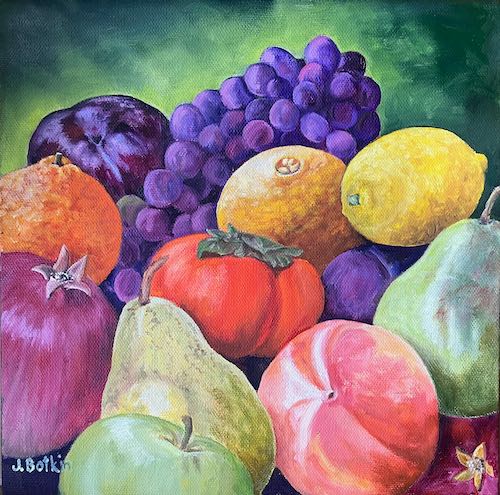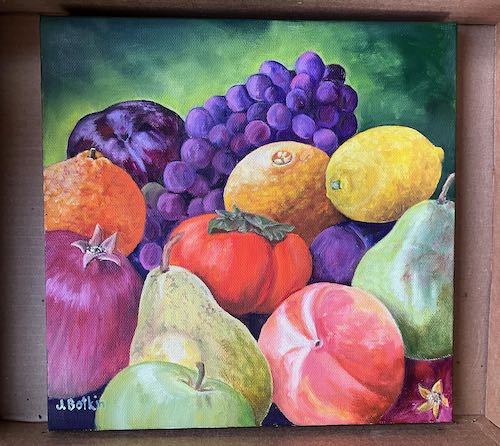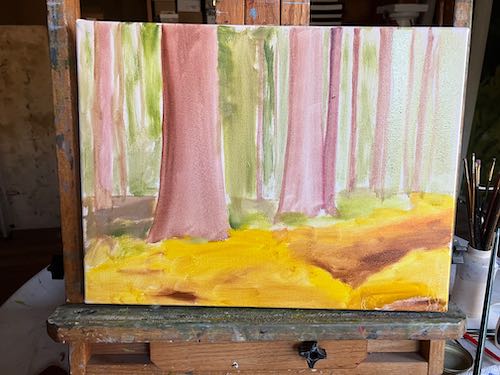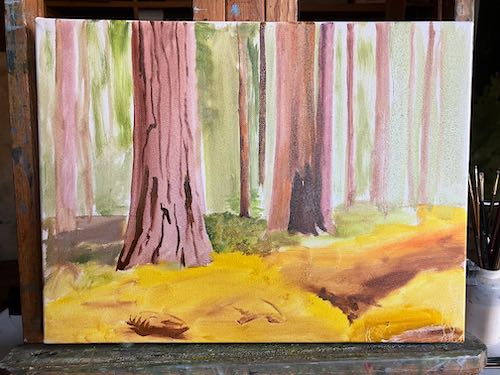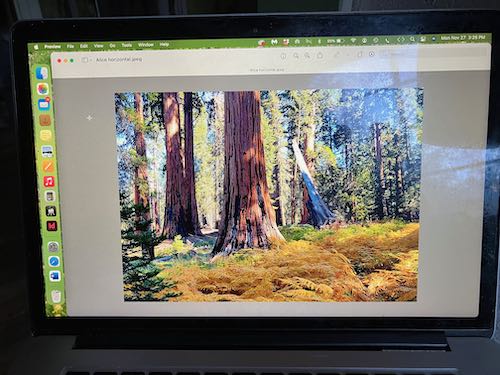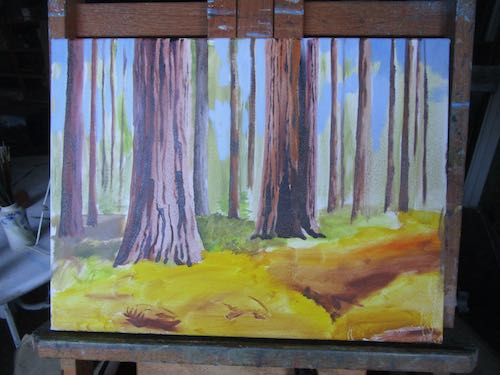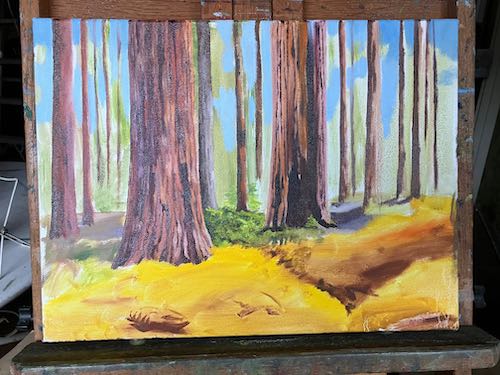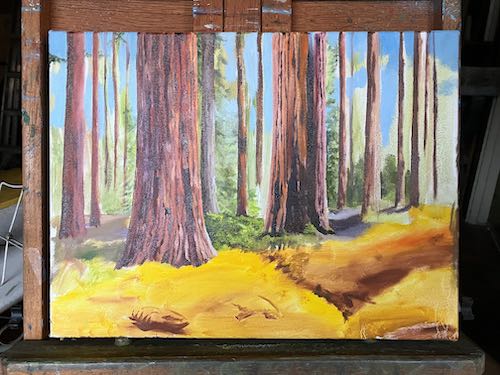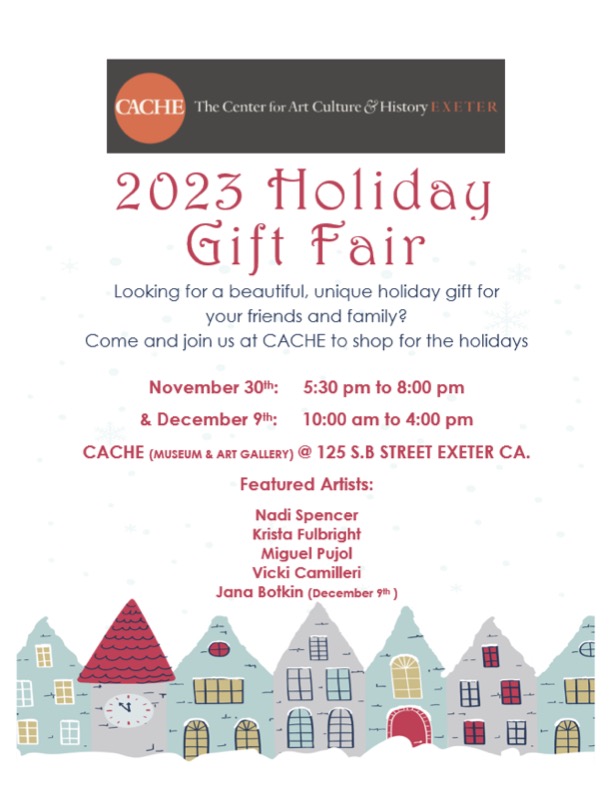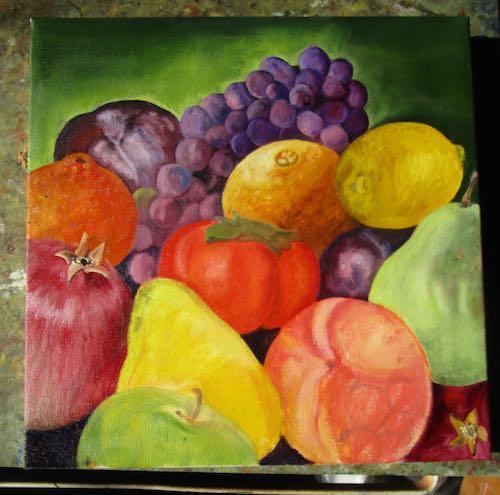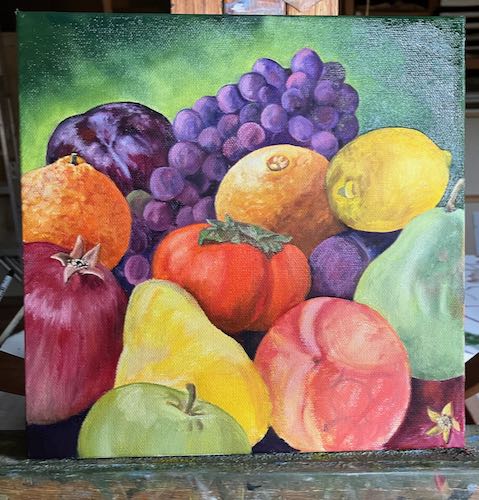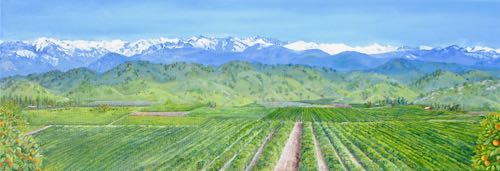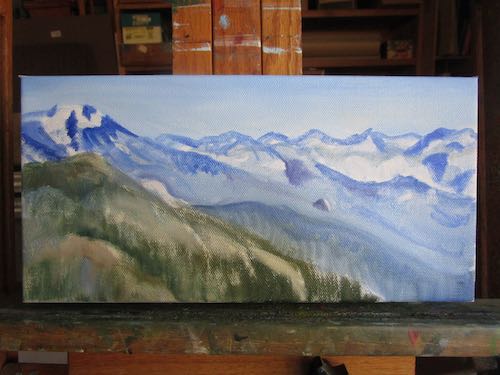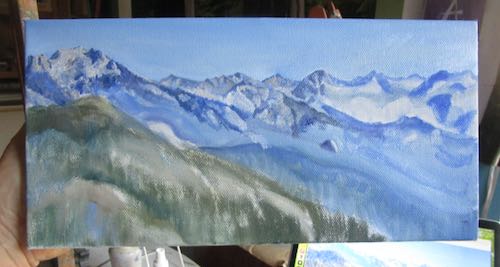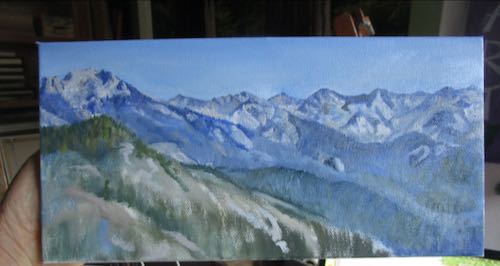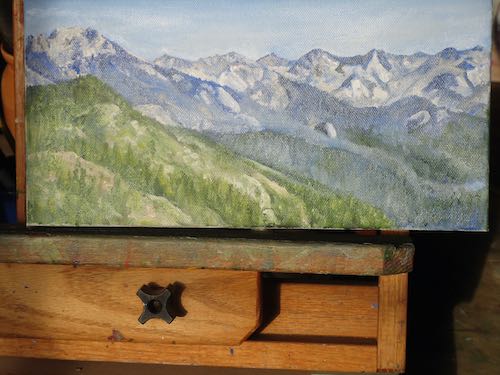When Kaweah Arts closed in early January for a couple of months, I retrieved all my paintings. Kaweah Arts sold well for me in its three year span despite serious hardships: a plague, a fire, another fire, and a flood, each one leading to the closure of Sequoia National Park, which meant the flow of visitors to Three Rivers ceased. I went through my records of sales, and came up with a list of sizes and subjects that sold the best.
The average price was $145, and the most popular subject was sequoia trees, Sequoia gigantea, AKA redwoods (the common name) or “big trees” (local vernacular). Two other popular subjects were mountain range views and poppies.
I gathered seven blank canvases from 8×8″ ($100) up to 6×18″ ($165) and then went to my oh-so-lovely newly organized photo files. The efficiency. . .!
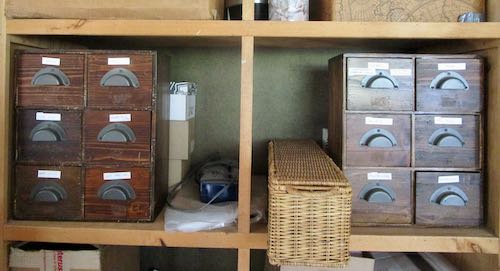
After pairing the photos with the right canvases, I then did some preliminary sketching. This isn’t something I normally do, but in the interest of painting quickly, this seemed like a prudent move. (Remember, I also need to produce 20-30 larger paintings for the solo show in October AND paint for the Silver City Store, which sells well for me in the summers when Mineral King is open to the public.)
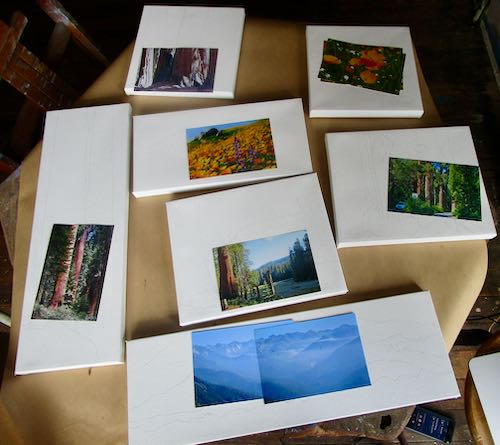
Next, I did the boring tasks of assigning inventory numbers, and putting the hanging hardware on the back. (This is the sort of task that makes me wish I had an apprentice or an intern.)
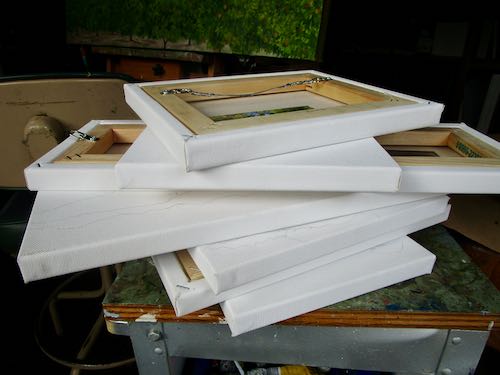
All-righty, then! Let’s start with the assembly line style painting of the first layer to establish where colors will go and to cover the canvas.
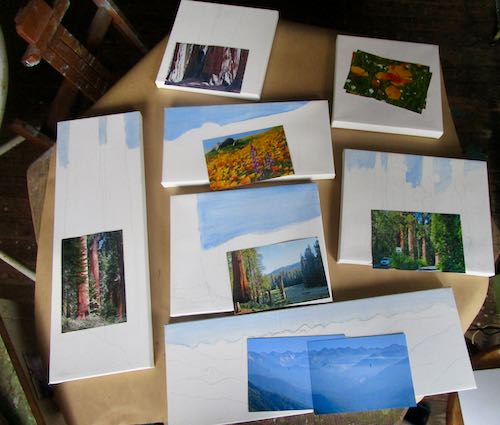
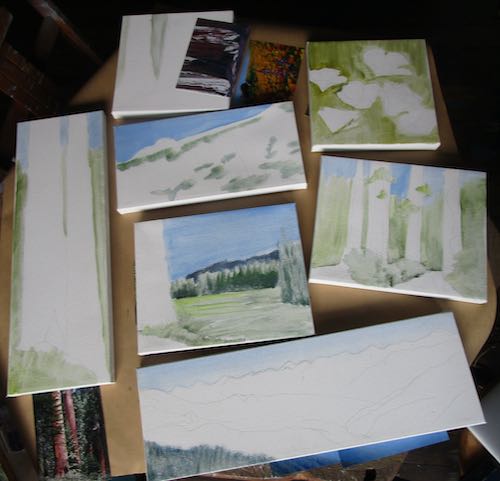
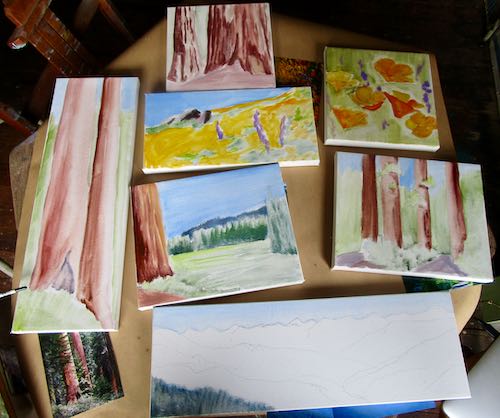
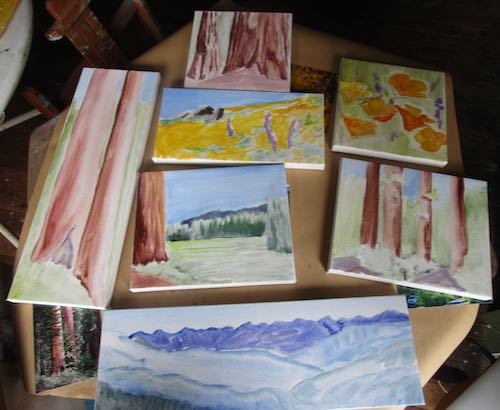
Looks like seven little messes that vaguely suggest what they will become, but with almost 18 years of oil painting, this is no longer alarming to me.
I hope you are not alarmed either. This is the most efficient way I know to paint, and these seven paintings will be finished, signed, dry, varnished, and scanned by the time Kaweah Arts reopens in March.
It’s all part of the business of art. (Just in case the Art World is checking in and judging my use of photos, let me explain that I took great care in composing those photos and have taken great care in cropping, blending, adjusting, and arranging the parts of each one of these paintings. So There, because working from photos is not wrong.)
